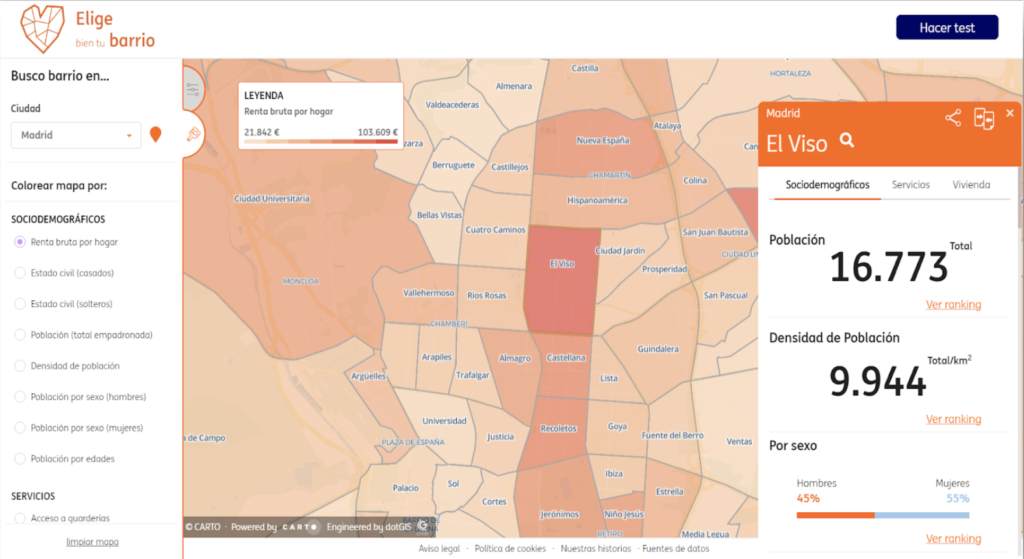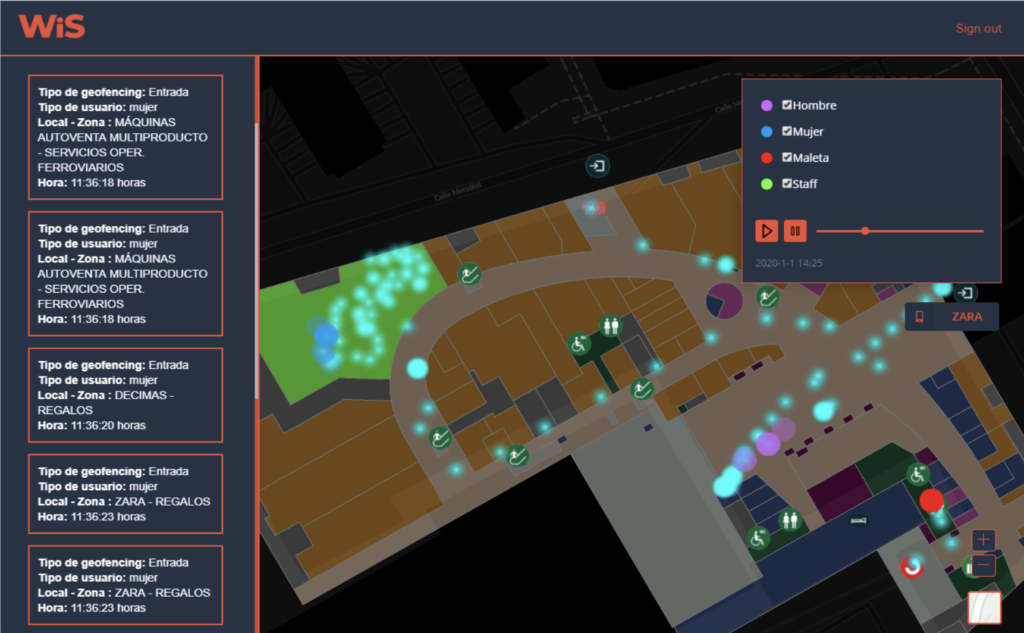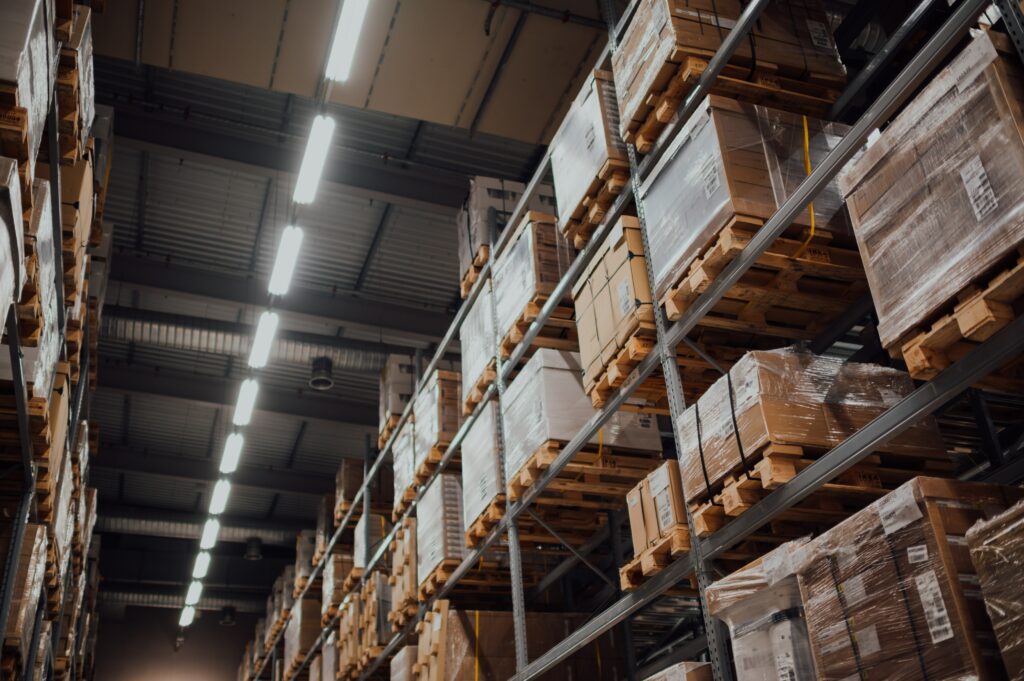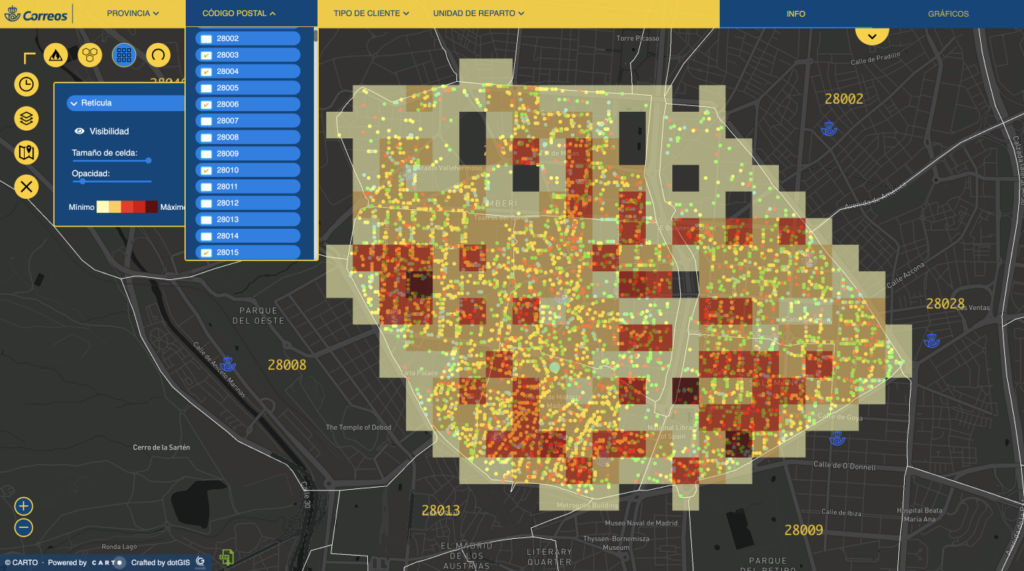The way we shop is very different now compared to how it used to be even just a couple months ago. Companies in the retail sector have become obligated to readjust and take necessary measures to provide safety and trust for their clients, doing their best to ensure that the impact of this new reality is as minimal as possible. The technological solutions provided by Location Intelligence is a key factor in this process. We ask, how does this contribute to the new normal within this sector?
Surely you have noticed that the way your clients shop is different now after the state of alarm had been declared. It is highly likely that they prefer that their purchases be delivered to their homes or that they arrange to pick them up from the store directly. They also are more cautious when entering an establishment, always maintaining a safe distance from other shoppers and employees.
This is not merely a perception, but rather a fact that is backed by the number of cases. As an example, we briefly analyze a study done by DS Smith. Amongst the conclusions that can be pulled from his work, these stand out the most:
- 68% of Spanairds confirm that they have shopped more online during the confinement.
- 88% affirmed that they would continue to shop online at the same rate or even more so during the new normal.
- 91% feel safer shopping online.
In regards to the types of products, in the same study a transversal trend was reflected within the data. Spaniards plan to continue shopping online for:
- Food: 66%.
- Home and Garden: 61%.
- Beauty products: 70%.
- Hygiene products: 69%.
- Kits and baskets of food: 62%.

This new situation obligates retail companies to rethink the way they connect with both clients and suppliers, and as well rethink their internal processes. Changes in technology like those in Location Intelligence offer solutions that can help redesign interior spaces, pick the best locations for an establishment or establish logistical operations that are more efficient, amongst other applications.
Location intelligence includes a series of technology that allows you to extract valuable data that is provided from geolocation information. Using this strategy, companies can make more accurate business decisions based on true, verified information.
From here on out, we are going to dive deeper into the more prominent uses of Location Intelligence within the retail sector, but not without first showing in detail the most important aspects in which the new normal has changed how establishments and supply chains operate.
How has the new normal affected commercial establishments?
The obvious trend towards shopping online comes with many consequences for physical stores, one of these being how convenient it is to preparar pick-ups for online orders, what is known as Click and Collect purchases.
Companies such as Walmart have had systems like this for years, their “Pickup Towers” cover more than half of the necessities of American homes. This way, the client only has to access the specific pickup area and, in some locations, they can do this without even getting out of the car.
On top of that, we have home delivery service, a service that should also adjust itself to the high demands we have now in which the geographic component is key.
Regarding the diversity in products that are offered in physical stores, the trend of e-commerce is an interesting way to offer only the products that sell the best there, this way stores optimize their available space while they work to amplify their online stores.
These types of hybrid stores have a lot of success in areas where there is a lot of pedestrian traffic, are easily accessible by car and in the areas where there is high online demand.
Example of ING platform:

How does geolocation contribute to this new model of store?
The solutions that Location Intelligence provides make it possible for stores to adapt to this new normal and can be applied not only to inside the store (Indoor Mapping) but also to accounting factors that surpass the walls of the establishment.
Indoor Mapping in closed establishments
We can begin talking about Indoor Mapping and how it is capable of providing the necessary information needed to optimize interior spaces of physical stores. With the term Indoor Mapping, we are referring to technologies that allow you to precisely locate people and objects in closed environments.
From the study done about client behaviour, one can determine with certainty which is the best location for certain products as well as define the most ideal route. The last one is especially important today as we need to combine selling as much as possible with avoiding agglomeration, ensuring the health and safety of everyone.
Putting ourselves in the shoes of the people who go to pick up our orders, these people want the easiest way to access the area that has been marked out for them so that they can avoid long wait times and reduce their chances of coming into contact with other people. This is how Indoor Mapping can help us to create safe places for these people.
We can also apply these measures to the restructuring of the areas designated for the preparation of orders ensuring that the workers are able to carry out their work without risk and without affecting productivity.
To extract all the necessary information and enjoy the potential of Indoor Mapping, we can make use of the many diverse technologies of geolocation, one of them being recognized devices like beacons that function with low power Bluetooth.
Wifi signals, that come WiFi Positioning Systems, allow you to determine the location of the mobile phones that are using the signals. Radiofrequency (RFID), infrared or ultrasounds are other useful technologies for interior positioning.
This information, that has been gathered and processed, is shown on a dashboard that can be interpreted and we can use this information to make decisions based on facts. The dashboard will reflect the truly relevant information by the representation of heatmaps/solarmaps or other types of displays.
Example of Indoor Solution for Train Stations:

Location Intelligence beyond the establishment
Companies in the retail sector can also obtain value from geographic information associated with exterior environments, in fact, this information is extremely useful when it comes to making decisions on the location of an establishment. Here array of factors enter the game:
- Density of traffic, very important if we want to establish pickup points for cars.
- Flow of pedestrian traffic, thinking about those people who want to pick up their orders on foot.
- Where do the clients who shop online live? This way we can cover the biggest number possible of stores and home delivery.
- Are there offices that tend to make orders frequently?
- Know you demographics of every area (age, buying power, sex…)
- This way you can locate the establishment where there might be the most potential customers.
- Know where the competition is.
One illustrative case that we are finishing is the development of a platform that detects optimal locations for the Goiko Grill restaurants in France. We can summarize the process in 5 phases:
- We integrate socio demographic information from various sources made up of open sources accessible to the public, pero this research isn’t as easy as one might hope.
- We create isochrone maps to determine how long it would take to get to the restaurant from a certain point in public transport.
- We calculate the area of influence.
- We buy locations.
- We locate twin zones that have similar characteristics.
The Main Changes to the Supply Chain with the new normal
This really important change that we have experienced in such a short time has reached supply chains. They have to respond as quickly as possible to the new demands of the sector if for nothing more than the sheer survival of their businesses.
The ability to give an efficient answer is closely related to the flexibility of the chain itself, that way they will be prepared during the times of high demand and also on the contrary, when demand is low. This kind of fluctuation in demand has been clearly seen recently in the food and pharmaceutical industries.
One way to qualify this ability is by evaluating the risks; with these evaluations one can identify the main risks and weigh the pros and cons. This serves as a way to prioritize and know what measures need to be taken in respect to the given situation.

Another clear trend supply chains are seeing is relying on nearby providers. Through this measure, companies are covered in the cases of movement restrictions for health security reasons. Besides that, by using nearby providers they can reduce transport costs.
It is recommended to have more than one provider as it eliminates the dependency on a single provider. In the case that you aren’t able to have various providers, it is advised that the one provider have distinct centers that are spread out over different areas.
As a measure of prevention, we should also mention the need of having higher levels of inventory that way that the companies are covered when facing possible supply shortage
New Logistic Solutions with Location Intelligence
This new way of tackling logistic operations is closely related with aspects of geolocation. Without going too far, Location Intelligence plays a particular role when it comes time to pick locations for storage facilities and distribution centers. It is also important to highlight its contribution to the design of efficient transport routes and for being capable of redefining themselves in response to the circumstances.
A case that really paints a picture and gives us an idea of the power of Location intelligence for distribution purposes, is the postal service in Spain Correos España. We developed a platform using Big Data and maps with real time visuals for deliveries. We are talking about millions of data collected that serve as a way to better plan routes, distribute the postal fleet and other resources and detect incidents.
Correos Use Case: A GEO BIG Data to understand our postal system:

The control over the flow of traffic gives us the incredible ability to respond quickly when facing chance events of all kinds. For example, to know where construction is being done, where there might be an accident or where traffic is the most dense normally, it allows us to recalculate alternate routes for commuters.
If we focus on shortage facilities or on distribution centers, we’ll go back to Indoor Mapping to have more control over everything that happens inside them. Just like with stores, where we could organize client traffic, we can also do the same with the operation of storage facilities. This would reduce the probability of mass spreading of the virus that, in extreme cases, could stop all activity, with undesired consequences.
Without a doubt, everything has changed in a blink of an eye and what is most important is that we can’t deny that it could happen again in the near future. So that this doesn’t catch us by surprise, companies in the retail sector should definitely put in place digitization methods with a touch of Location Intelligence.
Here at dotGIS we are here to offer our services to help you implement the solutions that best adapt to your needs. Tools that are custom made for you, with which you can stay ahead of the game and take advantage of all the geographic information that is being constantly “produced.” Many times, because of a lack of tools, much information is lost in limbo that is actually full of treasures in the form of data.
Taking advantage of this information wouldn’t be complete if we didn’t keep in mind all that is happening around us. Because of what is happening, we also offer necessary resources for the analysis of external variables. With all of this, we offer you a realistic and overall view of the universe of opportunities your company has in these times of the new normal. Will you let this chance pass you by?
